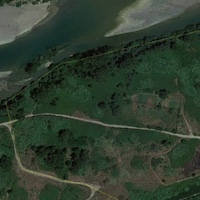[The ornithological breeding community in the Oasis of Arcola (Sp)]

Accepted: 10 March 2020
All claims expressed in this article are solely those of the authors and do not necessarily represent those of their affiliated organizations, or those of the publisher, the editors and the reviewers. Any product that may be evaluated in this article or claim that may be made by its manufacturer is not guaranteed or endorsed by the publisher.
Authors
[The waterways Rivers, especially in lowland areas, often result the elements of highest naturalistic value and play an important role as ecological corridors. Rivers are characterized by high dynamism and biological complexity, and the distribution of several bird species often depends on their physical characteristics and water velocity. During spring 2018, we studied the bird community dwelling in the Arcola Reserve, managed by Lipu, in province of La Spezia (NW Italy), included within the Montemarcello Magra Regional Natural Park (SCZ IT1343502). This site presents a portion of plain woodland with presence of arboreal substrate dominated by Alnus glutinosa, Populus nigra, Populus alba, Salix alba, and a portion consisting of scattered trees, xeric meadows with shrubby formations comprising Rosa canina, Rubus sp., Spartium junceum, Prunus spinosa. Besides, rare reed formations are present. In the 20 hectares of the study area, we carried out field samplings through 8 monitoring sessions since April 23th until June 26th 2018. Overall, we found 62 species of which only 32 were (potentially, probably or certainly) nesting inside the reserve (22 belonging to Passerines and 10 to the non-Passerines species). Nightingale Luscinia megarhynchos (16.87 ± 4.37 individuals), Blackcap Sylvia atricapilla (16 ± 1.41 individuals), Cetti’s Warbler Cettia cetti (13 ± 2.06 individuals), Melodious Warbler (11.88 ± 6.88 individuals), Blackbird Turdus merula (10.75 ± 1.30 individuals) and Great Tit Parus major (9.88 ± 4.04 individuals) were the most abundant species. The density was 62.97 pairs/10 ha, whereas diversity resulted 2.47, this evidencing a considerable degree of complexity, while the evenness value suggests a certain degree of homogeneity in the abundance of the surveyed species. Five dominant species were present. Although the Passerines resulted the most important order in the community, also the non-Passerines showed a value higher than the one reported by other authors, although in less heterogeneous environments. Less than one third of the breeding species resulted to be long migrant species. Results of the present study represent a first step towards the increased knowledge about the avian community of the Arcola Reserve, especially addressed to its administrators as to highlight the need of preserving natural habitats and associated animal and plant species].
[Article in Italian]
Downloads
Citations
PlumX Metrics
PlumX Metrics provide insights into the ways people interact with individual pieces of research output (articles, conference proceedings, book chapters, and many more) in the online environment. Collectively known as PlumX Metrics, these metrics are divided into five categories to help make sense of the huge amounts of data involved and to enable analysis by comparing like with like.
How to Cite
PAGEPress has chosen to apply the Creative Commons Attribution NonCommercial 4.0 International License (CC BY-NC 4.0) to all manuscripts to be published.
Similar Articles
- Federica Luoni, Alessandra Gagliardi, Guido Tosi, Eco-ethologicol characterisation of alien species: Vinous-throated Parrotbill, Paradoxornis webbianus, and Ashy-throated Parrotbill, Paradoxornis alphonsianus, with radiotracking , Rivista Italiana di Ornitologia: Vol. 82 No. 1-2 (2012)
- Leonardo Mostini, [Bird predation on larvae of the box tree moth, Cydalima perspectalis (Walker, 1859)] , Rivista Italiana di Ornitologia: Vol. 88 No. 2 (2018)
You may also start an advanced similarity search for this article.


 https://doi.org/10.4081/rio.2020.444
https://doi.org/10.4081/rio.2020.444



